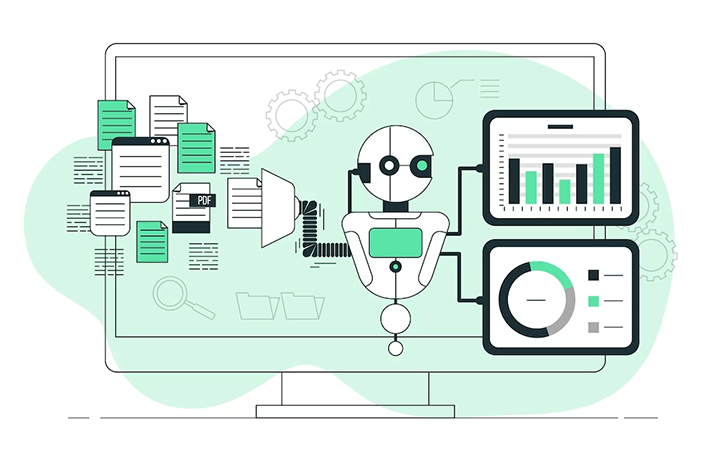
Click the button to start reading
Discovery Phase in Project Management: What it is, why it’s important, and how to navigate it.
As a project manager, you may be tempted to rush through the discovery phase or entirely skip it. After all, it can feel like a lot of extra work with no immediate payoff.
But this would be a mistake. The discovery phase is one of the most important parts of project management, and it’s essential to navigate it properly in order to ensure a project’s success.

What is the discovery phase?
The discovery phase is the initial stage of a project, during which the project team identifies and defines the project’s goals and objectives. This phase is where lots of learning and research takes place. Because the project manager and team need to understand the project’s scope, requirements, and constraints.
During the discovery stage, you collaborate with clients to collect data on their organization, goals, barriers, resources, and present position. In this phase, industry research, user research, competitor research, and a thorough assessment of relevant business processes and prior work by the organization should be conducted. Data-gathering may include reviewing company archives, examining documentation or groundwork, or interviewing stakeholders.
It’s important to spend the necessary time and effort in this phase to make sure that everyone is on the same page and that everyone understands what the project is trying to achieve.
Broadly speaking, the discovery phase is important because it allows project managers to precisely answer two important questions: What are we trying to achieve? and How can we achieve it?
The first question is about the project’s objectives. By taking the time to identify and define these objectives, project managers can ensure that everyone is on the same page and that everyone is working towards a common goal. This clarity is essential for a successful project.
The second question is about the project’s approach. By understanding the project’s objectives, project managers can figure out the best way to achieve them. This involves figuring out the necessary steps and resources, and it allows project managers to plan for potential roadblocks and setbacks.

Where things go wrong
There are a lot of mistakes that can be made in relation to the discovery phase. As mentioned above, the most notable problems are either the phase is completely rushed or altogether neglected.
Rushed
There are two primary reasons why discovery phases may be rushed. The first is human psychology, and the second is the demands of the work. Alternatively, it might be said that there are both internal and external forces at play.
Internal pressures are ones you place on yourself. If you’re like most managers, you’re probably your own worst critic, and you may be quite harsh on yourself to get things done quickly. It’s only natural for you to want to see concrete results as soon as possible. It can be frustrating to devote time to something that doesn’t pay off right away.
External pressures come from our environment and the people around us. Colleagues, clients, and superiors might all be putting pressure on us to get things done quickly. They may not understand the importance of a well-done discovery phase and may not see the value in taking the time to do it properly.
Neglected
On the other hand, sometimes project managers neglect the discovery phase altogether. There are a number of potential reasons for this but the most notable are the feeling that you already know what the project is supposed to achieve, or you underestimate the importance of the discovery phase, for the success of your project.
What it leads to…
When the discovery phase is rushed, it can lead to a lack of clarity about the project’s objectives and goals. This often creates confusion and conflict among team members, and can make it extremely difficult to move forward with the project.
Also, when the discovery phase is neglected, it can lead to problems further down the line. The project may get off to a rough start, lacking clear goals or objectives, and this can lead to wasted time and resources as the project team struggles to figure out what they’re supposed to be doing.
In either scenario you run the risk of project failure.

Why the discovery phase is important for your projects
The discovery phase is important because it lays the foundation for the rest of the project. During this phase, the project team identifies what needs to be done and determines how best to do it.
Because this phase is easy to neglect, it’s important for you to see a solid list of advantages to the discovery process. The benefits of a well-executed discovery phase include:
- As the project progresses into the implementation stage, the chances of having to make major changes diminish
- The project team is able to stay on track and avoid costly mistakes
- Communication among team members improves, leading to a more cohesive team
- The project is completed on time and within budget
- There are fewer surprises and setbacks during the project
- Increased chances for project success
- Cohesion with client before project begins
- Increase in confidence for your team and clients

How to navigate the discovery phase.
The key to successfully navigating the discovery phase is to take things slow and steady. This means taking the time to properly assess the project and its objectives, and then developing a plan of action that will achieve these goals.
There are a number of steps you can take to make sure the discovery phase is a success:
1. Assemble a discovery team
The discovery team is responsible for conducting the research and analysis necessary to define the project’s objectives. This team should include representatives from all key areas of the project, including management, design, engineering, marketing, and operations.
It’s not absolutely crucial to have a team. You could just complete this phase with information offered to you by your client. This of course would limit the accuracy of the project and could have unforeseen consequences further down.
2. Conduct research (analyze, and make adjustments)
The research stage in the project discovery process is very important. It aids in giving managers and employees a better understanding of the work that must be completed on each project component.
There are four different areas you’ll want to research in order to get a complete understanding of the project.
For one your research should be directed at your client.
Understanding your clients business and what they want to achieve is an absolute must in project discovery. You should also look at what your company does best and try to match that with what the client is looking for.
This is where queries are asked and concerns are addressed. Customer interviews are crucial for establishing project expectations and ensuring that the project’s general aims are dialed in.
Second, your research should be directed at your overall market environment.
What does your project aim to change or improve within a given industry? How are other agencies tackling similar projects? It’s important to review the market and see what others are doing. This will help you set expectations for your project, as well establish benchmarks that can be used during development if necessary.
Third, your research should be directed at your clients or your competitors.
What do they offer that is similar to your project? What are their strengths and weaknesses? What can you learn from them and apply to your project for the betterment of it.
What are their price points? Where are they promoting? What is the project messaging?
It’s important to have a comprehensive understanding of not only what you want to do with the project, but what others are doing as well. This will help in the long run when trying to differentiate your product or service from what else is out there.
Fourth, your research should also be conducted on project risks.
Risks can come in many different shapes and sizes, but knowing about potential risks before they become an issue can help mitigate them. What are the risks associated with this project? What could go wrong and how will we handle it? This is an important part of project discovery and should not be taken lightly.
A good analysis of the project starts with a good understanding of the problem or opportunity that needs to be addressed. The discovery team should gather as much information as possible about the project, including the business goals behind it, the stakeholders involved, and the current state of the market.
3. Checking back in with client to present potential solutions
Once your project team has a pretty good understanding of the problems and potential solutions, you should reinitiate a meeting with your client to communicate your findings.
At this point, it’s important to check in with the client to see if any of their suggested solutions match up with what the project team is thinking. If not, the project team can continue to brainstorm until they come up with solutions that meet your client’s needs.
Once a potential solution is identified, the project team will need to do a more in-depth analysis of the project to see if it’s feasible. This includes things like cost analysis, timeline planning, and risk assessment. If everything looks good, the project team can move on to the next step.
4. Construct a preliminary budget and timeline
The project team will also need to create a preliminary budget and timeline for the project during the discovery phase. This isn’t a final budget and timeline, but it’ll give you a good idea of what the project might cost and how long it might take to complete.
This information can then be used to help get buy-in from stakeholders and to set expectations for the project.
5. Finalize project goals and objectives
The project team should also finalize the project goals and objectives during the discovery phase. These are the specific outcomes that the project is hoping to achieve and should be measurable so that you can track and report on them later.
6. Draft a project plan
Once all of this information is gathered, the project team can start drafting a project plan. This document will outline how the project will be executed, who is responsible for each task, and what the timelines look like.
This document will be updated and revised as the project progresses, but having a solid plan in place during the discovery phase is essential for a successful project.
7. It’s time to begin
Once everything is finalized, the project team can start working on putting the project plan into action. This can be a daunting task, but with a good project plan and team in place, it can be done.

Final thoughts on discovery phase
The discovery phase is an important part of project management and should not be taken lightly. This is the time when your project team does all of the research and planning necessary to successfully execute the project. There are a lot of things that need to be done during this phase, but if it’s done correctly, the project will be off to a good start.
A well-executed project discovery phase doesn’t just make things easy for you and your project team, but it also helps create a good experience for your clients. They’ll appreciate the fact that you took the time to do your homework and that you’re being proactive in finding solutions to their problems.
















